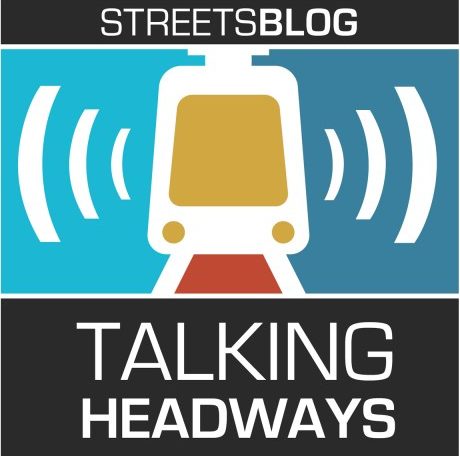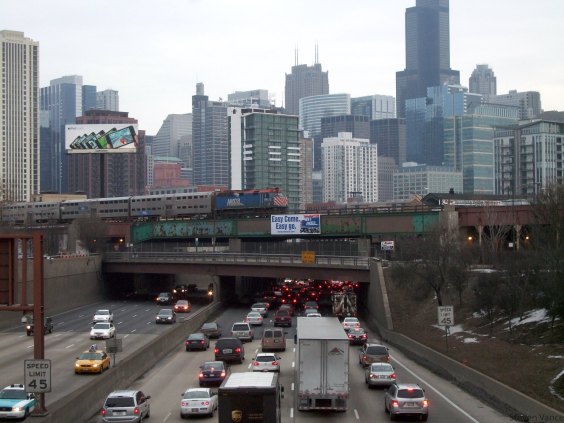This week, Regional Plan Association President and CEO Tom Wright looks back at the history of the RPA, the fight for congestion pricing in New York City, and how the Triborough transit line got traction.
For those of you who get your news through your eyes and not your ears, there’s an edited transcript below the audio player. For an unedited transcript, click here.
?
Jeff Wood: What about the Triborough Line that you all have been planning for a long time but just got rebranded as the Interborough Express?
Tom Wright: Well, that’s another of these ... long-term [projects as we] like to stay at RPA. Eventually, we think, we bat a thousand on everything. There’s some things that can take more than a hundred years to get done, the Second Avenue Subway is another one of those. In the 1990s, our transportation and research team for the Third Regional Plan looked at this right of way, lightly used rail freight right of way, circling through Brooklyn and Queens and then connecting into the Amtrak right of way, going up through the Bronx and thought: This is a wildly underutilized asset. We ought to be able to put some transit here. At one point, we thought that maybe a subway should go underneath it.
Later, we thought, no, we don’t even need to dig a subway tunnel. Just carve up the right of way and make sure that you’re segregating freight and passenger use and you can do something there. So we’ve been talking about that for 20-plus years. And, you know, again, sometimes it’s just really important not to let a good idea die. And we’ve been doing kind of the grassroots organizing around it. Every time a new borough president would come in in the Bronx or Brooklyn or Queens, we’d go meet with them and talk about it. They always love the idea. When we talked to communities, ... over those decades, what was happening ... they were changing in ways that made the project even more powerful. More job growth is now happening in Brooklyn and Queens than in Manhattan.
More travel is happening within and between those two boroughs than all going into Manhattan. And sometimes you have an idea and you know, it sounded good at one point, but you know, 20 years later maybe the reality on the ground has changed, so it doesn’t make as much sense. This was one where, as time went on, the argument in favor of it just got stronger and stronger and stronger.
I give a lot of credit. I’ll say this publicly here. A couple years ago, our office here at RPA is in lower Manhattan next door to the MTA. And one day as I was coming in, I bumped into Janno Lieber, who at the time was the head of construction and development for the MTA was doing the long-term capital planning. He’s now the CEO, and Janno said, "I just saw this report or this old RPA idea that Triborough; I think it’s brilliant. How come it’s never going anywhere?"
I said, "well, we’ve been trying to get people’s attention. And there’ve been concerns about how you would do the freight and the passenger stuff, but nobody’s really, nobody at your level has ever really looked at it closely." He said, "let’s take a look," and he’s been quietly doing the research and making sure. The first thing was to make sure that there weren’t fatal flaws. You know, we proposed it, but maybe there was something we missed, while they did an analysis with consultants and [found] no fatal flaws. Now they’re kind of looking at the mode. What do you, what do you want on it? Is this a BRT system, a light-rail system, a heavy-rail system?
The truth is, that’s a tough question. And I don’t think that they’ve sorted that out yet. At RPA we’re not all in on one [of the modes] as opposed to the others. The other thing that I will say is ... last fall, I found myself in the green room backstage at an event with Janno and Gov. Hochul and he said, "Hey, governor, ask Tom about this Triborough proposal that RPA has." She said, "What is that?" And I explained it briefly to her. Then I followed up with her chief of staff, and she really went in on it. Sometimes it just takes that it takes a chief executive willing to get out on a limb. The analogy in my mind is, if I’m going to ask a public official to kind of climb out onto a tree branch first, I have to go out there and swing on it a few times and show them that it’ll hold. And so we’d been trying to do that. But she has really, Gov. Hochul has, really committed to this idea; the response to it has been incredibly positive. And I think it’s moving forward.
Now, I’ll guess your next question. You know, we called it the Triborough and we would have it go up to the Bronx. And I still hope someday it will, but in full disclosure, we knew from our back-of-the-envelope analysis that building the Bronx piece of it would be both the most expensive and have the lightest ridership. And one of the things that’s changed in the 25 years since we originally proposed the Triborough, was a project called Penn access.
This is essentially a recognition that, right now, people who live and commute on the New Haven Line, which runs from New Haven, Conn., through Fairfield County, through Westchester and through the Bronx. That’s the Metro North service that runs to Grand Central, but those same train tracks are also Amtrak’s Northeast Corridor line. At a point they diverge and Amtrak trains go over into Sunnyside, Queens, and then underneath the East River and come to Penn Station. ...
But for the last 15, 20 years, the MTA has been building a project called East Side Access, which is going to provide a one-seat ride for Long Island Rail Road riders to go to Grand Central. And the day East Side Access opens, which will be later this year, by the way, about half of the LIRR riders going to Penn Station are suddenly going to shift to going to Grand Central, because that’s where their jobs are located. That will then open up capacity and space at Penn Station, which has been above capacity. And so very smartly folks at the MTA said, well, then we could make a few improvements on the Northeast Corridor line, on the Amtrak right of way. And we could give Metro North commuters on the New Haven line, the option of taking a train to Grand Central or to Penn Station, too.
And so Penn access is moving forward. And specifically, they’re doing some improvements to the right of way, but also building new stations in the Bronx that will provide good commuter-rail service for folks living in the Eastern Bronx and an opportunity to get a one seat ride over to Penn Station and the west side where new jobs are being located and things. So the thing with Triborough and Interborough is that, right now, the MTA is making improvements to that right of way that we had also identified for the Triborough, they’re building out four stations. The state argued, and we agreed with them, that rather than just stick to a vision from 25 years [ago], from now build the first phase of this thing, which is the Brooklyn and Queens portion of it.
But hold off on the Bronx, because ... Penn Access will be in the ground and, in just a couple of years, then we can take a step back and think about, so what does the Bronx need now in terms of transit priorities? And it may be that we still want the Interborough to someday stand up to the Bronx. It may be that a higher priority should be extending the Second Avenue Subway to the Bronx. It may be that it’s bus rapid transit. It could be other things, too. But that’s kind of recognizing that things have changed since we first promoted the Triborough idea. And, in particular, the very right of way that we were looking at is being repurposed for something else. And that’s why I think that they’re right to focus on Brooklyn and Queens right now.






